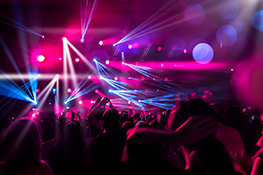The Ultimate Guide to Effortless Stage Lighting Design
Understanding Your Space: The Foundation of Effortless Design
Before you even think about fixtures, understand your performance space. Measure the dimensions, assess ceiling height and load-bearing capacity, note any architectural features that might influence light placement, and identify potential obstructions. Consider the audience’s perspective – where will they be sitting or standing? A detailed floor plan annotated with these elements is invaluable. Knowing your space intimately allows for precise lighting placement, maximizing impact and minimizing wasted effort. Photographing the venue from various angles can further assist in visualizing light placement and potential challenges.
Choosing the Right Fixtures: A Symphony of Light
Selecting appropriate lighting fixtures is crucial. Different fixtures offer unique qualities. LED par cans provide versatile color mixing and are energy efficient; moving heads offer dynamic effects and precise control; Fresnels provide a soft, even wash; and ellipsoidal spotlights deliver sharp, focused beams. Consider the type of performance: a musical might benefit from moving heads for dynamic effects, while a theatrical production might favor the precise control of ellipsoidals. Understanding the specific needs of your production, whether it’s a small-scale play or a large-scale concert, directly impacts the fixture selection process.
Color Theory and Mood Setting: Painting with Light
Color is a powerful tool in stage lighting. Warm colors (reds, oranges, yellows) evoke feelings of intimacy and excitement, while cool colors (blues, greens, purples) can create a sense of calm or mystery. Understanding the psychology of color and how it interacts with the set design and costumes is essential. Color temperature (measured in Kelvin) also plays a crucial role. Warmer temperatures are cozy, while cooler temperatures are sharp. Using a color wheel and experimenting with various color combinations can significantly enhance the overall mood of your production. Don’t be afraid to experiment and find what works best for your show’s narrative.
Creating Layered Lighting: Depth and Dimension
Avoid flat, one-dimensional lighting. Instead, layer your lights to create depth and visual interest. Use a combination of front light (to illuminate the actors’ faces), back light (to separate the actors from the background), and side light (to add dimension and highlight features). Consider using gobo patterns to project shapes and textures onto the stage, adding another layer of visual complexity. Strategic layering produces an engaging and dynamic visual experience for the audience. Remember to prioritize balancing light levels for a cohesive and professional look.
Harnessing Technology: Simplifying the Process
Modern lighting consoles offer sophisticated control over your lighting design. Learn how to use the features of your console effectively to create cues, sequences, and dynamic lighting changes. Investing time in learning lighting software can automate repetitive tasks, allowing you to focus on the creative aspects of your design. This technology provides efficient control and greatly streamlines the overall lighting process.
Efficient Workflow and Collaboration: Team Effort
Effective communication is key. Work closely with the director, set designer, and costume designer to ensure your lighting design complements the overall vision. Creating a detailed lighting plot, which maps out the placement of every fixture, is essential for smooth execution. A clearly defined workflow, including pre-production planning, rehearsals, and technical execution, significantly contributes to an effortless and successful lighting design process.
Post-Production Analysis and Refinement: Continuous Improvement
After the performance, review recordings and gather feedback. Analyze what worked well and what could be improved. This iterative process allows you to refine your technique and consistently enhance your skills as a lighting designer. Don’t be afraid to experiment and evolve your style over time – experience is your greatest asset.
SEO Keywords:
Stage lighting design, lighting design for theatre, stage lighting techniques, lighting plot, lighting console, LED stage lighting, moving head lights, par cans, fresnels, ellipsoidal spotlights, color temperature, color psychology, lighting design software, theatrical lighting, concert lighting, event lighting, lighting workflow, lighting collaboration.


 Auditorium Construction Services
Auditorium Construction Services 